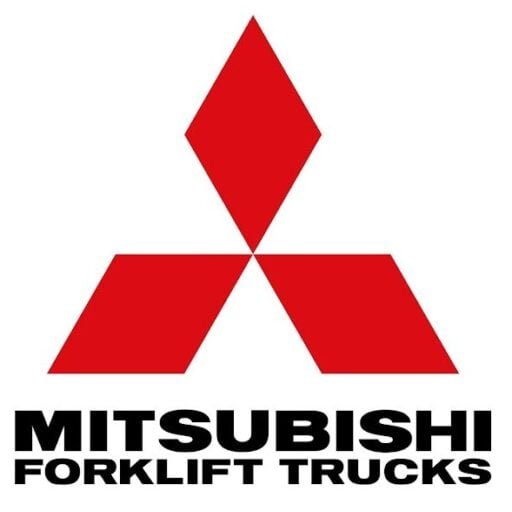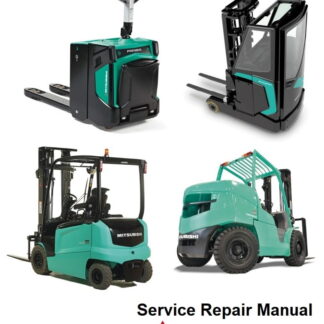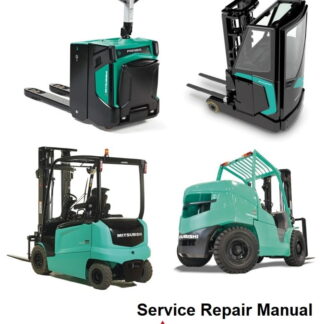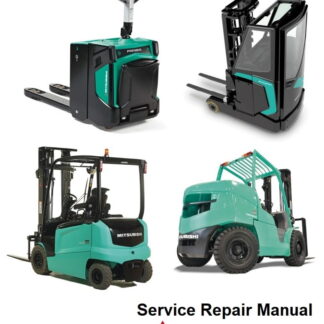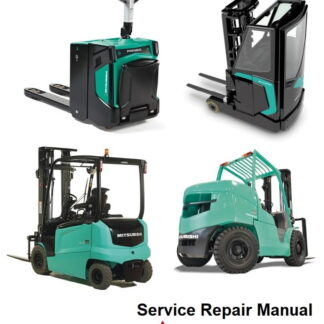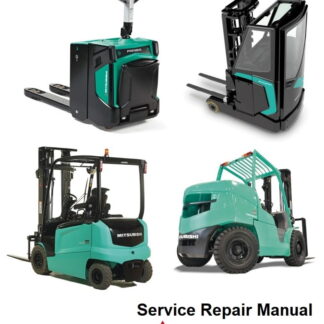
Mitsubishi forklifts are renowned for their durability, efficiency, and performance in various industrial settings. To maintain these high standards, Mitsubishi provides comprehensive service manuals in PDF format. These manuals are invaluable resources for technicians and operators, offering detailed guidance on testing, adjusting, and troubleshooting. This article delves into the contents and benefits of these manuals, exploring their role in ensuring the optimal performance of Mitsubishi forklifts. For more information, you can visit Mitsubishi Forklift Manuals.
Comprehensive Overview of Mitsubishi Forklift Manuals
Mitsubishi forklift service manuals are meticulously crafted to offer a complete understanding of the machinery. These manuals cover every aspect of forklift maintenance, from basic operations to complex diagnostics. They are designed for both experienced technicians and beginners, ensuring that all users can benefit from the detailed instructions provided. The manuals are available in PDF format, making them easily accessible and convenient for on-the-go reference.
Each manual is structured to facilitate ease of use, with a logical progression from general maintenance tasks to more specific troubleshooting procedures. The content is organized into sections that cover different components and systems of the forklift, such as the engine, hydraulic systems, and electrical components. This structured approach allows users to quickly find the information they need without sifting through irrelevant details.
In addition to the technical content, the manuals also include safety guidelines and best practices for forklift operation and maintenance. These sections are crucial for ensuring that all maintenance tasks are conducted safely and in compliance with industry standards. By following these guidelines, users can prevent accidents and ensure a safe working environment.
The availability of these manuals in PDF format also means that they can be easily updated and distributed. This ensures that users always have access to the most current information and can stay informed about the latest maintenance techniques and safety protocols. For comprehensive access to these manuals, visit Mitsubishi Forklift Manuals.
Essential Testing Procedures for Forklift Maintenance
Testing procedures are a fundamental aspect of forklift maintenance, ensuring that each component functions correctly and efficiently. The Mitsubishi forklift service manuals provide detailed testing instructions that cover various systems and components. These procedures are designed to identify potential issues early, preventing costly repairs and downtime.
The manuals include step-by-step guides for conducting tests on the engine, transmission, and hydraulic systems. Each test is accompanied by clear illustrations and diagrams, making it easier for technicians to understand and execute the procedures. By following these testing protocols, operators can ensure that their forklifts operate at peak performance, reducing the risk of unexpected breakdowns.
In addition to routine testing, the manuals also cover diagnostic procedures for identifying specific issues. These diagnostic tests help technicians pinpoint the root cause of a problem, allowing for targeted repairs and maintenance. This approach not only saves time but also ensures that the forklift is restored to optimal condition as quickly as possible.
Regular testing and diagnostics are essential for maintaining the longevity and reliability of Mitsubishi forklifts. By adhering to the testing procedures outlined in the service manuals, operators can extend the lifespan of their equipment and maintain a high level of operational efficiency. For more detailed testing procedures, refer to the Mitsubishi Forklift Manuals.
Adjusting Techniques for Optimal Forklift Performance
Adjusting various components of a forklift is crucial for maintaining optimal performance and efficiency. The Mitsubishi forklift service manuals provide comprehensive guidance on adjustment techniques for different systems and components. These adjustments are essential for ensuring that the forklift operates smoothly and effectively in various conditions.
The manuals cover a range of adjustment procedures, including those for the engine, brakes, and steering systems. Each procedure is detailed with clear instructions and diagrams, allowing technicians to perform adjustments accurately. By following these guidelines, operators can fine-tune their forklifts to meet specific operational requirements and enhance overall performance.
Adjustments are not only about improving performance but also about ensuring safety. Properly adjusted forklifts are less likely to experience malfunctions or accidents, making them safer for operators and those working around them. The manuals emphasize the importance of regular adjustments and provide tips for maintaining optimal settings over time.
For operators looking to maximize the efficiency of their forklifts, understanding and applying the adjustment techniques outlined in the service manuals is essential. By doing so, they can ensure that their equipment remains in top condition, ready to handle any task with precision and reliability. For detailed adjustment techniques, consult the Mitsubishi Forklift Manuals.
Troubleshooting Guides for Common Forklift Issues
Troubleshooting is a critical skill for maintaining the functionality and reliability of forklifts. The Mitsubishi forklift service manuals offer extensive troubleshooting guides that address common issues encountered during forklift operation. These guides are designed to help technicians quickly identify and resolve problems, minimizing downtime and repair costs.
The troubleshooting sections of the manuals cover a wide range of issues, from engine malfunctions to electrical faults. Each guide includes a list of symptoms, possible causes, and recommended solutions, providing a clear path for resolving the issue. This systematic approach ensures that technicians can efficiently diagnose and fix problems, restoring the forklift to optimal working condition.
In addition to common issues, the manuals also cover more complex problems that may require specialized knowledge or tools. These sections provide advanced troubleshooting techniques and tips for dealing with challenging scenarios. By following these guides, technicians can tackle even the most difficult issues with confidence and expertise.
Having access to comprehensive troubleshooting guides is invaluable for maintaining the reliability and efficiency of Mitsubishi forklifts. By utilizing the resources provided in the service manuals, operators can ensure that their equipment remains operational and productive, even in the face of unexpected challenges. For detailed troubleshooting guides, explore the Mitsubishi Forklift Manuals.
Mitsubishi forklift service manuals are indispensable resources for anyone involved in the maintenance and operation of these robust machines. By providing detailed testing, adjusting, and troubleshooting guides, these manuals empower technicians and operators to maintain their forklifts at peak performance. Whether you are addressing routine maintenance tasks or complex repairs, these manuals offer the guidance needed to keep your equipment running smoothly and safely. For access to these comprehensive resources, visit Mitsubishi Forklift Manuals.
